Amplifikation (2009)
Sound installation with sixteen glass plates and four speakers in the former tram depot of the electricity works Weimar. Commissioned by the Kunstfest Weimar as part of the TanzMedienAkademie 2009. Art directors: Carsten Seiffarth (sound), Nik Haffner (dance).
Amplifikation is the process by which something that defies our senses is transformed into the sphere of perception (the latin root of the word indicates that something is made “considerable”). Amplifikation was both an autonomous work and the point of departure for a work with live-electonics and dance. This documents deals with the actual sound installation. The dance workshop is covered in a separate file.
Concept
The rather broad title was chosen in order to be able to connect various molecules of thought during the period of three weeks I was working in situ. The threads originate in the end of the 19th century when the electrification started, eventually bringing the microphone and loudspeaker as the two central elements of electroacoustics. However, amplification also as a chemical process by which the photography negative becomes visible, photography being another invention of the 19th century that through the decrease of exposure time led to chrono-photography and then moving image. The chrono-photography was an element that particularily interested me, unrolling time in space and thereby being related to the dynamic character of the arts at the turn of the 20th century (e.g. futurism).
Finally, amplification as a method that transforms the background—that which is inconspicuous—into the foreground, explicating and magnifying that which was previously “background noise”.
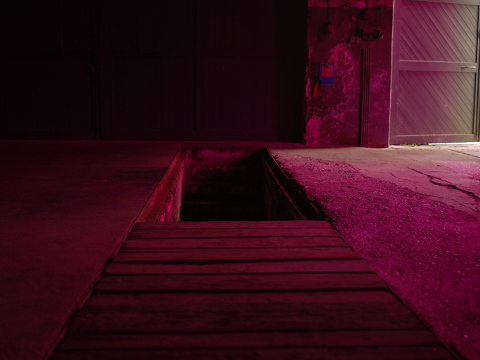
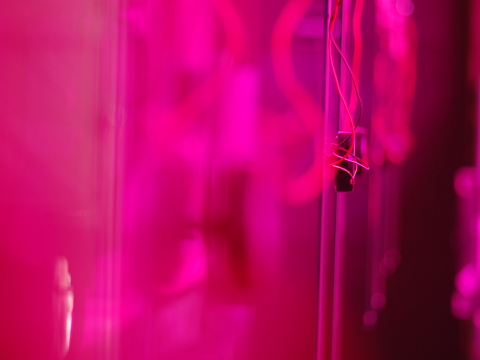
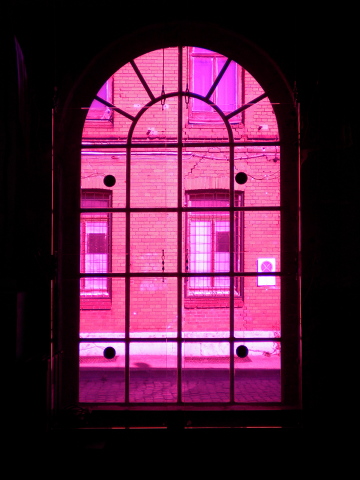
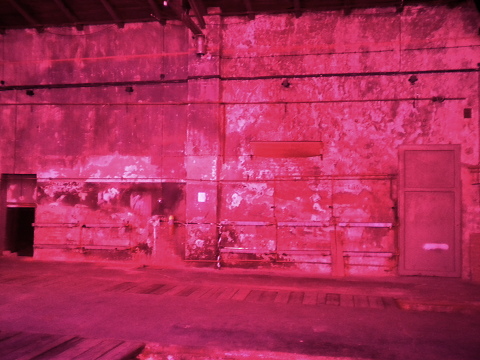
Installation
The core atmospheric element of the space were the four large windows, and those were duplicated and shifted into the space in the form of four glass plates each. The beauty lies in the preservation of the view into the outside, in the visual transparency combined with sound projected in a “transparent” manner onto the sixteen plates. A special pink gel was used in front of the windows to create a homogenous atmosphere that is at the same time calm but also unreal and amplifies the objects seen outside the building, mainly the brickwalls of the opposite building on the left side that strongly gain contrast, and the sky to the right.
The plates are suspended like tableaus of a gallery and become acoustically “exposed” through black transducers which transmit vibration into the plates, so that they become loudspeaker membranes.
Unlike a regular speaker, the idiomatic sound of the glass is important. For example, the background noise of the space gets amplified and played back into the room, whereby it adopts the special spectral characteristics of the glass and appears as a particular harmonic layer. Another material generator for the sound composition is a series of dream diary fragments. Originally I wanted to have these texts appear graphically, each day during the exhibition exposing another plate. However I felt that this would have created too much distraction from the sight through the glass and would be overdoing the semantic level.
Finally, the dream fragments remained only in acoustical form: As recordings of my voice whispering the texts, creating a dense texture through the simultaneous playback. The calligraphic quality of the handwriting was translated into a rhythmic noise texture through the invention of a special algorithm “Beltrami” for my FScape software. Next to the room feedback this became the key sound of the work.
Amplifikation (room rec.; use headphones)

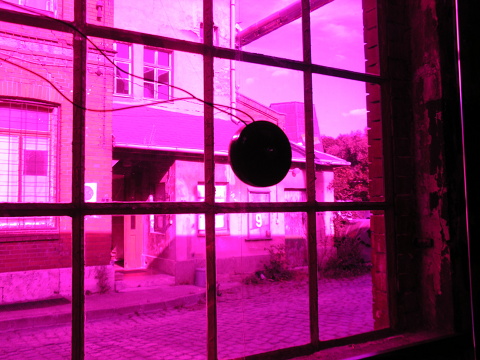
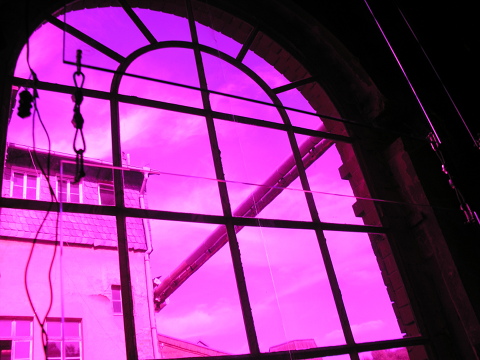
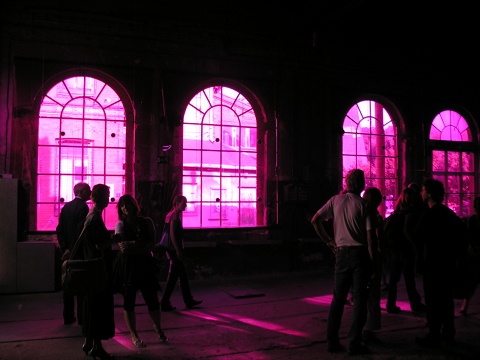
Compositional notes
In the final form, the composition basically is movement between the three mutual sound generation layers, where the room feedback layer is special in that it perpetuates what has happened before (as can be heard in the middle and the end of the above recording). Durations of the layers vary randomly within certain bounds, and the micro structure of each layer is also subject to random operations. Another process filters the generators in three different, sometimes overlapping ways, changing the brilliance and articulation of the sound and putting spatial highlights. For example, a filter whose transfer function is the inverse of each glass plate’s impulse response, moves slowly across the plane, bringing out certain moments in the sound stripped from the natural resonances.
The metallic orthogonal axis with the sounds from the heating appears independantly, and the acoustical shadow of the dancers (the spatially realistically reproduced sound of their movements) interrupts the whole composition occasionally.
Continuation and Space
The choice of glass plates along windows, this time however vertically suspended, and also the usage of broadband voice and impulse sound create a very strong connection to another sound installation, «Kalligraphie», although the intimicy works in a different manner, and in «Amplifikation» the visitor is much more invited to experience the change of sound colour and spatial dissolution depending on his/her position in the large space. By approaching and moving away from the sound sources, the sounds can be perceived as phases of an auditive chrono-photography. Moving away increases homogeneity and correlation, approaching the windows unfolds the particular local sound of each plate. In the middleground, the motion of “highlights” can be perceived.
While the initial setup already extended the alleged two-dimensionality of the sound projection into the third dimension—especially the noisy impulse sounds have strong reflections on the opposite wall—this orthogonal axis became more explicit with the integration of two elements from the dance workshop (and the four unobtrusive speakers on the opposite wall) at the end of the exhibition: The spatial depth axis in the form of bright metallic impulses that were recorded from the heating elements of the room, and the occasional appearance of the acoustical shadow of the two dancers on the opposite wall.